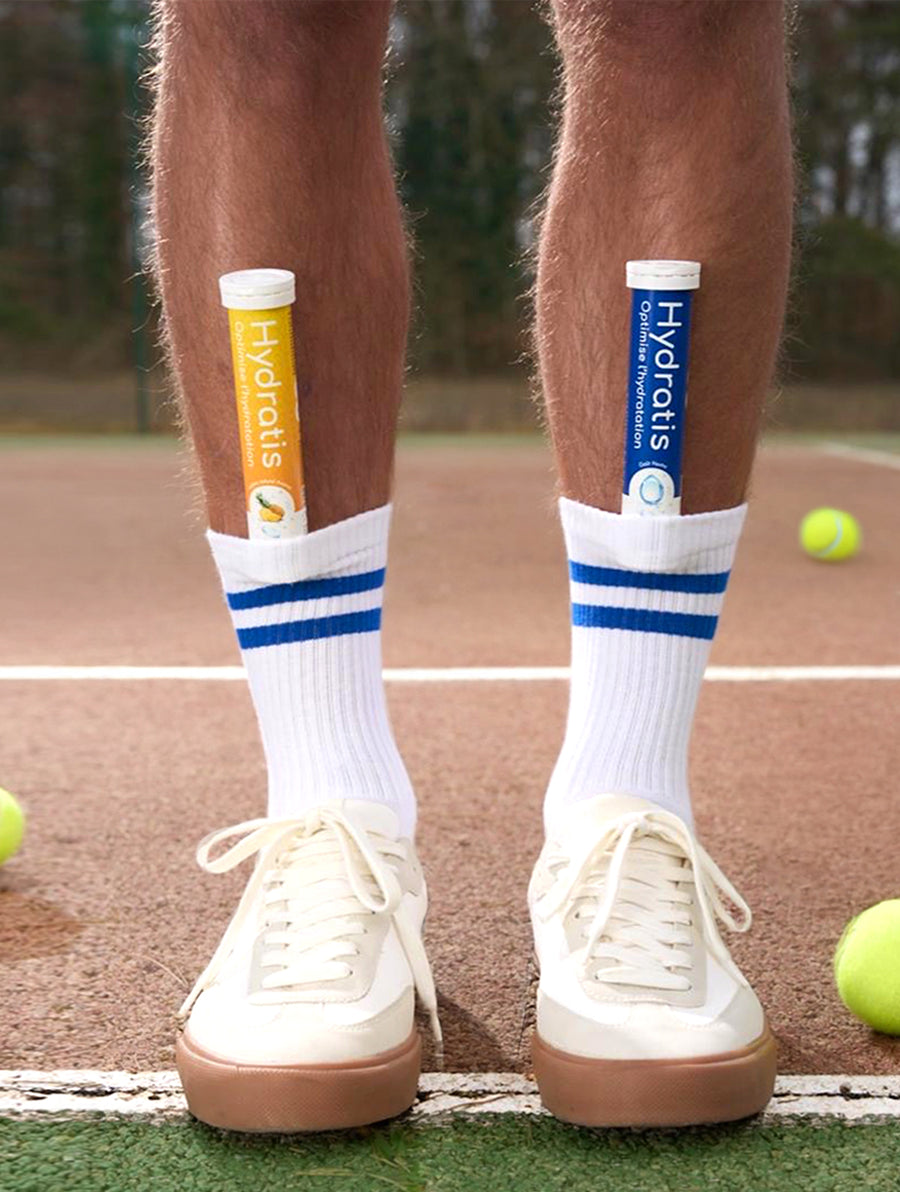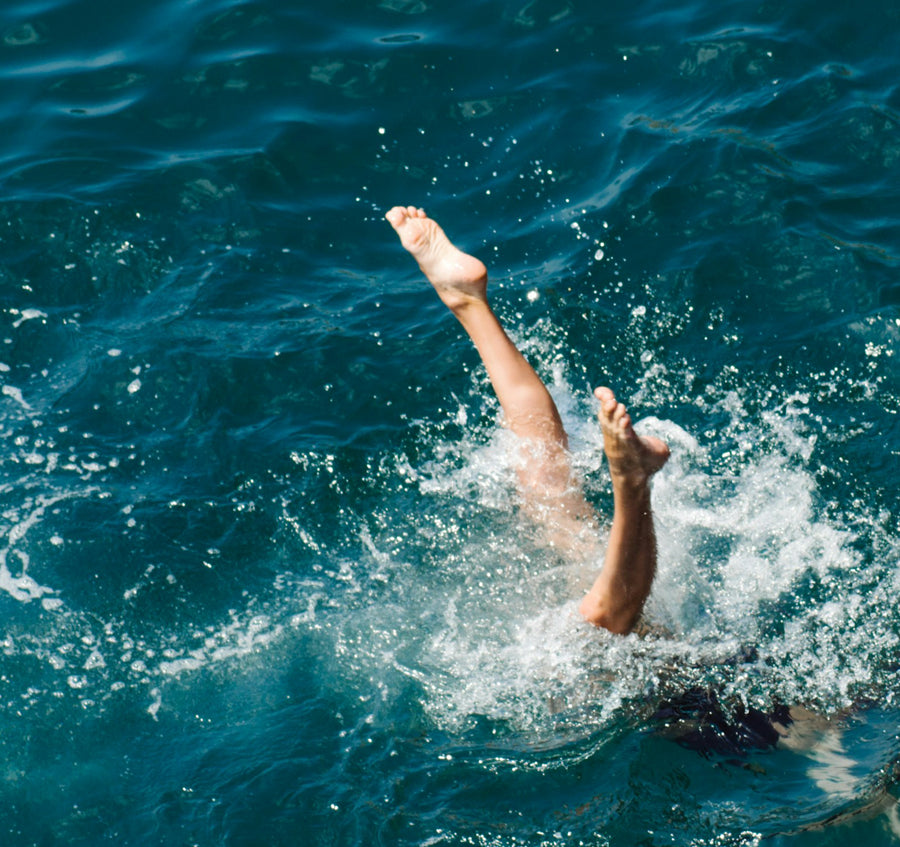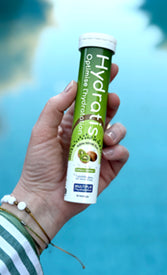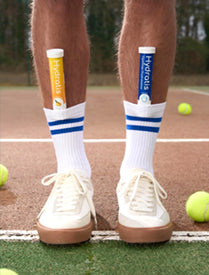In summer, our bodies are put to the test to cope with rising temperatures. The heat waves that punctuate the summer have a real impact on our bodies, particularly our hydration levels, which drop much more rapidly in the heat. It's therefore essential to remain vigilant because the risks of dehydration are real, and there's only one solution to avoid these problems: hydration, both more and better. Let's look at the effects of rising temperatures on our bodies and how to deal with them.
The impact of intense heat on our body: Thermoregulation and dehydration.
- During heat waves, our body must put in place various mechanisms to maintain its temperature around 37.5°C. Faced with a sudden increase in temperature, it then triggers a series of physiological processes: this is called thermoregulation.
- Initially, the blood vessels dilate. This dilation allows heat to be conducted to the skin and facilitates heat exchange with the outside environment: the blood is cooled. This adaptation of the body to heat is known as convective cooling. Heat is transferred to the external environment.
-
What is the role of perspiration in summer? The most effective mechanism for coping with heat remains perspiration. It is an essential phenomenon that, in addition to playing a role in thermoregulation, allows for the elimination of numerous metabolic waste products. Perspiration involves the sweat glands, which produce sweat. In hot weather, these glands activate and coat the skin with a thin film of sweat, providing a feeling of coolness, but it is through evaporation that the sweat dissipates heat. We perspire on average 0.5 to 1 liter of sweat per day, which can increase to 4 liters per day in very hot weather . Perspiration is mainly composed of water, but also of electrolytes, namely sodium at a level of 70 mmol/L and chloride at a level of 55 mmol/L. This is why perspiration has a salty taste!
[ What is the purpose of perspiration ?]
[ the composition of sweat ]
- In hot weather, the body can become overwhelmed and unable to maintain its core temperature. A lack of water and electrolytes is enough to limit sweat production, which will then be insufficient to lower the internal temperature, risking heatstroke.
- As you've probably guessed, during a heatwave, your worst enemy is dehydration; here are the signs:
The most obvious sign of dehydration is thirst . It's a message from your brain telling you that your body needs water.
In case of a greater lack of water, your mucous membranes (mouth, lips) are dry , you feel fatigue and cramps .
The amount of urine you produce is also a good indicator of your hydration level; if it is low, you need to rehydrate.
Furthermore, since the human body is composed of 60% water, a loss of more than 5% of your total weight can be a sign of severe dehydration.
Finally, headaches and neurological disorders such as confusion , dizziness , or disorientation are also indicators of insufficient fluid intake.
If you experience these symptoms, seek advice from a healthcare professional.
- Besides these unpleasant symptoms and the risk of hyperthermia , the consequences of dehydration on your body don't stop there. Significant water loss also leads to a significant loss of electrolytes, particularly sodium. Sodium plays a key role, as it is involved in maintaining blood pressure, contributes to the proper functioning of nerves and muscles, and regulates the body's fluid balance . A lack of sodium, also called hyponatremia*, can therefore cause hypotension, mental confusion, involuntary muscle contractions, and seizures.
- Hyponatremia is one of the most frequently observed hydro-electrolyte abnormalities, but what does that mean in concrete terms?
The normal blood sodium concentration is between 135 and 145 mmol/L. A concentration below 135 mmol/L is called hyponatremia: a decrease in blood sodium. Conversely, a concentration above 145 mmol/L is called hypernatremia : an increase in blood sodium. These two conditions (hyponatremia and hypernatremia) affect the distribution of water in the body. Water is distributed between the intracellular and extracellular environments, that is, inside and outside the cells.
In hyponatremia, an imbalance occurs between water and sodium: the blood becomes less concentrated in sodium and more concentrated in water. Water then moves from the area of higher concentration (the blood) to the area of lower concentration (the cell) to restore its concentration balance. The problem is that this loss of water from the blood to the intracellular environment leads to extracellular dehydration.
Tips for staying hydrated during the summer
To stay healthy during a heatwave, it's essential to compensate for water and electrolyte losses by maintaining adequate intake. The body cannot store water because it uses it continuously through respiration, perspiration, and waste elimination via urine. Therefore, it's crucial to replenish this daily fluids by hydrating regularly throughout the day.
The Hydratis formula is the ideal solution to meet your needs and prevent dehydration during hot weather. Hydratis is the first solution suitable for children aged 3 and up to effectively hydrate. Its electrolyte-enriched tablets, which dissolve in a glass of water, help your body replenish lost water and minerals ( see the BFM interview ). With natural and fruity flavors, hydration becomes a real pleasure, even for those who don't like water!






